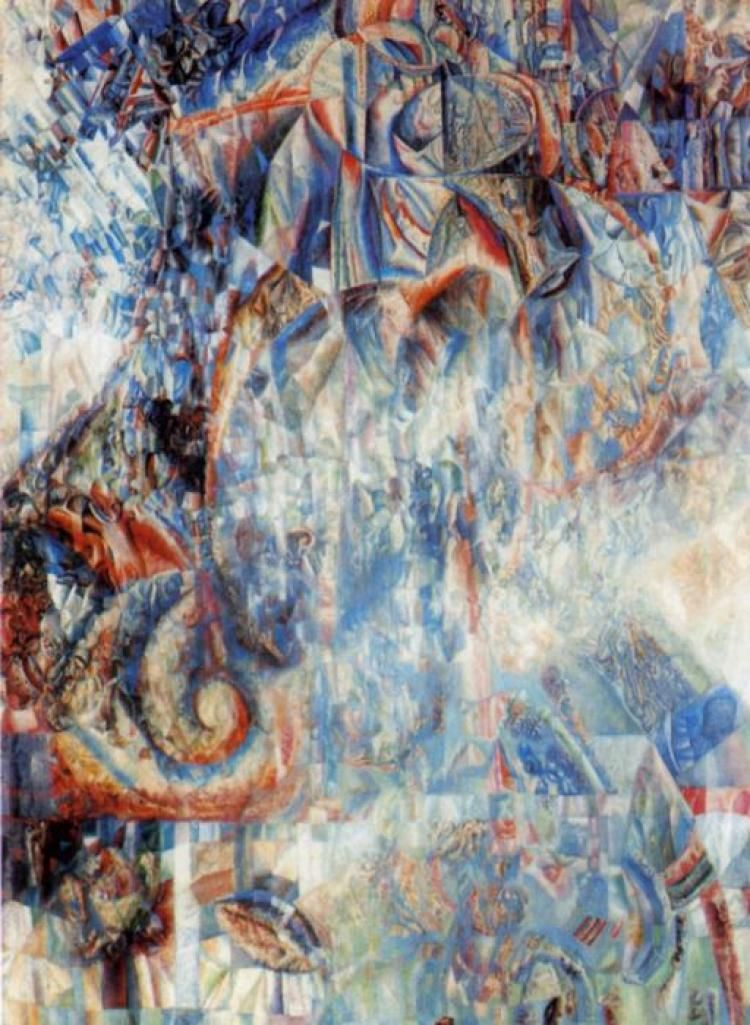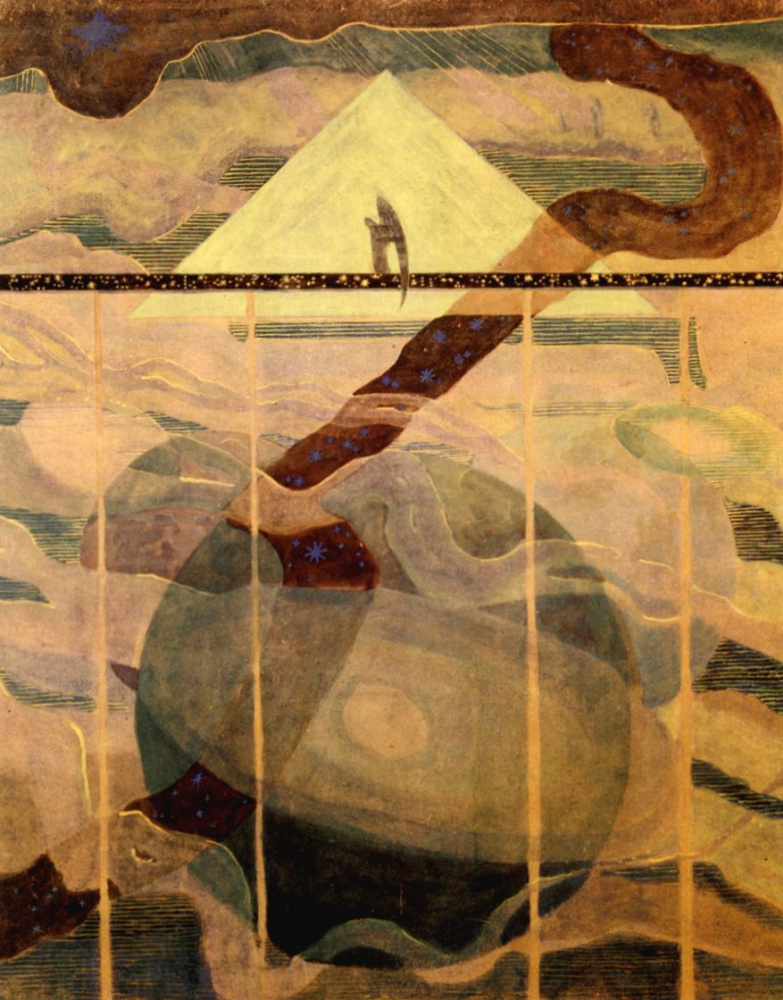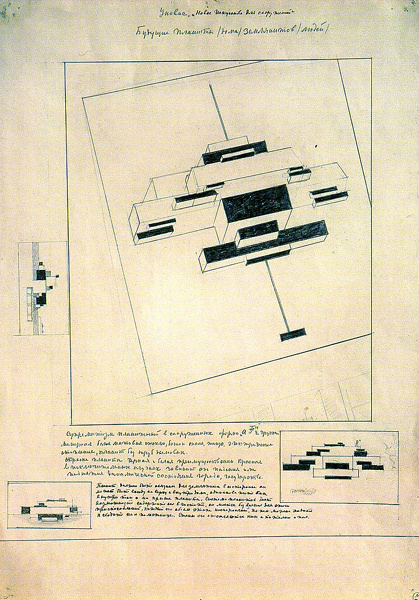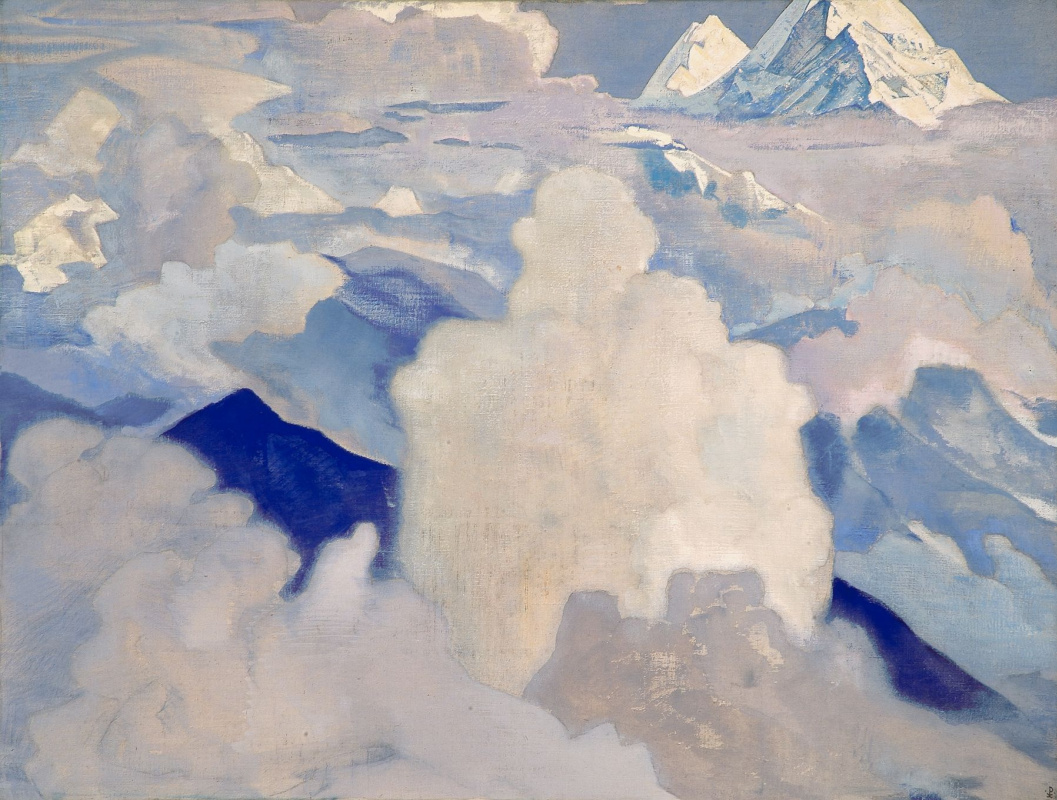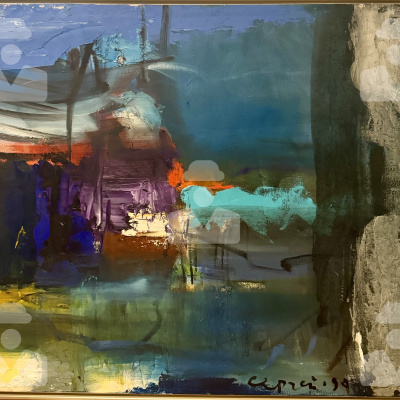Early 20th century was marked by the rapid scientific and technological progress, and various philosophical futurological trends developed at the same time. One of such philosophical thoughts was cosmism, the desire to know the laws of the Universe, the theory of its origin and the place of man in the evolution of universal space. The relationship between the macrocosm and the microcosm formed the basis of a new art movement, which sought to show the viewer the grandeur of interstellar space and the beauty of the human soul.
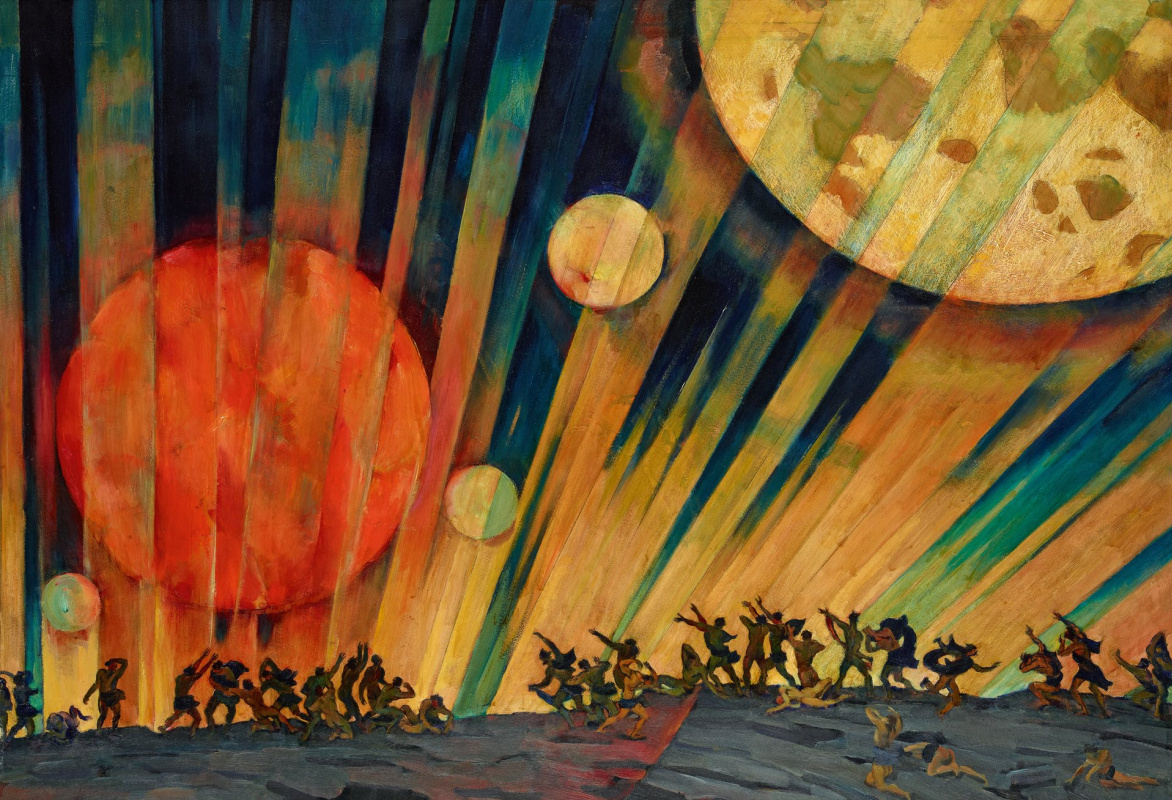
The title "cosmism" originates from the Greek cosmos, which means "ordered space". Scientists and philosophers strove to prove the systemic nature of the laws of life that govern the universe. The conquest of new planets, the possibility of manned flight into space, the study
of stars and galaxies — these global scientific tasks excited the minds of the artists who tried to tell the audience about the future, about the innovations that await mankind.
One of the ideological founders of Russian cosmism was the religious thinker and futurologist Nikolai Fedorov (1829—1903). Fedorov’s main concept was that the predicted by Christ upcoming bodily resurrection of those who had gone to the other world, would be realized through scientific achievements. And this, according to the thinker, would become possible only after the world unity of mankind, with the triumph of reason and goodwill. Earth would be too smal for those who rise from the dead — hence the idea of conquering outer space, new planets.
Sonata of the stars
1908, 73×62 cm
Fedorov’s theories were based on the Christian worldview. But the "father" of cosmonautics, Konstantin Tsiolkovsky, not only developed the motion equation and the principle of the two-stage rocket, but also considered the possibility of human space exploration from more practical positions; for example, by building a number of orbital stations in earth orbit. Tsiolkovsky believed in the power of evolution, he believed that one day life on one of the planets would reach such a level that living beings would be able to travel in the Universe by means of mind alome, overcoming distances and gravity. Why not the Earth’s humanity? But what will people see when they get to other planets? What conditions will they meet there — air, colour, atmosphere, vegetation, other living things?

Pyotr Fateev. Composition. From the "Experience of building a new world by association with the old one" cycle. 1917
Vladimir Vernadsky, the author of the biosphere doctrine, contributed to the development of the cosmism theories, as well as Alexander Chizhevsky, the founder of heliobiology and landscape
artist at the same time, the Frenchman Pierre Teilhard de Chardin, one of the founders of the noosphere theory, and many other scientists and philosophers whose interests were attracted by the question of unity of Man and the Universe. Of course, these widely discussed ideas attracted such artists as Kazimir Malevich, Mikalojus Čiurlionis, Nicholas Roerich, Vasily Chekrygin, Pavel Filonov. Each of them saw the philosophy of cosmism in his own way and captured his ideas about it. Thus, Kazimir Malevich made his attempts to represent the future homes of "earthlings", which he called "planites".
Future planites (homes) of the earhlings (people)
1924, 44×30 cm
Another representative of cosmism in art, Ivan Kudryashov, was fond of the space flight theory from his childhood. His father worked in the Tsiolkovsky design bureau. Having decided to devote himself to painting, Kudryashov was a supporter of Cubism and Suprematism; in 1920, he created a large Space series, and later — the series called Constructions of Rectilinear Motion and Constructions of Curvilinear Movement, as well as Birth of the Planet.

Ivan Kudryashov. The birth of the sun. The flight. 1920s
Nicholas Roerich interpreted the cosmism theory in his own way. With his wife Helena, he created the doctrine of Living Ethics, or Agni Yoga. In fact, continuing Tsiolkovsky’s ideas about overcoming the outer spaces with the power of thought, the Living Ethics doctrine distinguishes the Human earthly world and the Subtle World and Fiery World, invisible to human eye, created by lower and higher psychic energies. Self-improvement of each person and the entire population of the planet as a whole should lead people to new levels of self-awareness and penetration into the "higher spheres". Nicholas Roerich showed his interpretations of his ideas in many of his paintings.
White and heavenly. From the series "His country"
1924, 89×117 cm
In 1923, the ideas of cosmism united a group of artists headed by Peter Fateev. Boris Smirnov-Rusetsky, Vera Pshesetskaya, Alexander Sardan, Sergey Shigolev, Viktor Chernovolenko, who were influenced by the works of Camille Flammarion, Nicholas Roerich, Helena Blavatskaya, were part of Amaravella group. "Our creativity, mostly intuitive, is aimed at revealing various aspects of the Cosmos — in human forms, in landscapes and in displaying abstract images of the inner world," the members of the Amaravella group wrote in their manifesto. They invited the viewer to perceive their works not with his mind, but with his feelings, empathizing with the images and ideas.

Pyotr Fateev. Above the Stars. From Zaratustra cycle. 1915
The philosophy of cosmism was unacceptable for the Soviet regime, but the scientific development and dreams of space exploration fit perfectly into socialist realism
. In 1935, the "Space Flight" movied was released, the production designer of which was Yuri Shvets. While designing the sets and costumes, Shvets turned to Konstantin Tsiolkovsky for help, clarifying such nuances as, for example, the man’s capabilities in zero gravity.

Yuri Shvets. Moon. Ocean storms. Gagarin Prospect, 1996.

Alexey Leonov. Planet in the Nebula.
The most famous artist who painted space is cosmonaut Alexei Leonov. Together with Andrey Sokolov, he created a number of works that not only depicted views of the Earth from space, but also took the viewer into the world of fantasy — new unexplored worlds, stars and galaxies.






